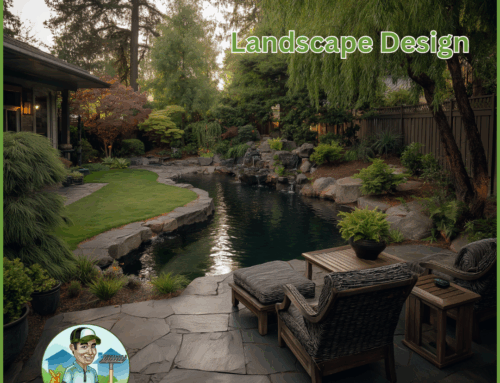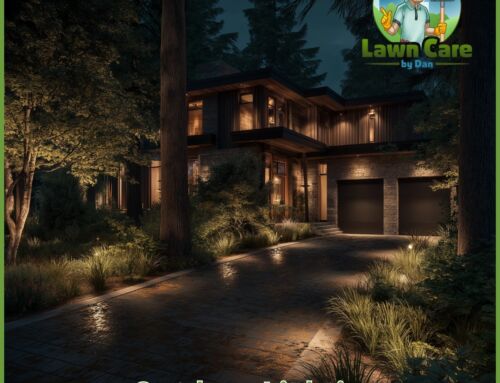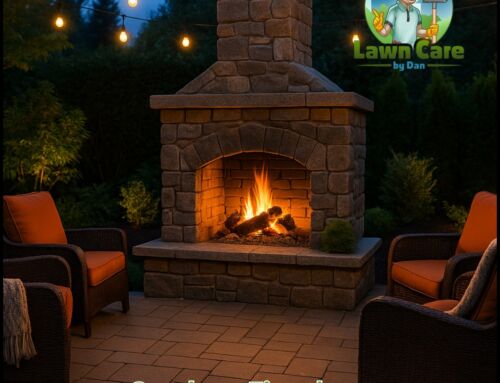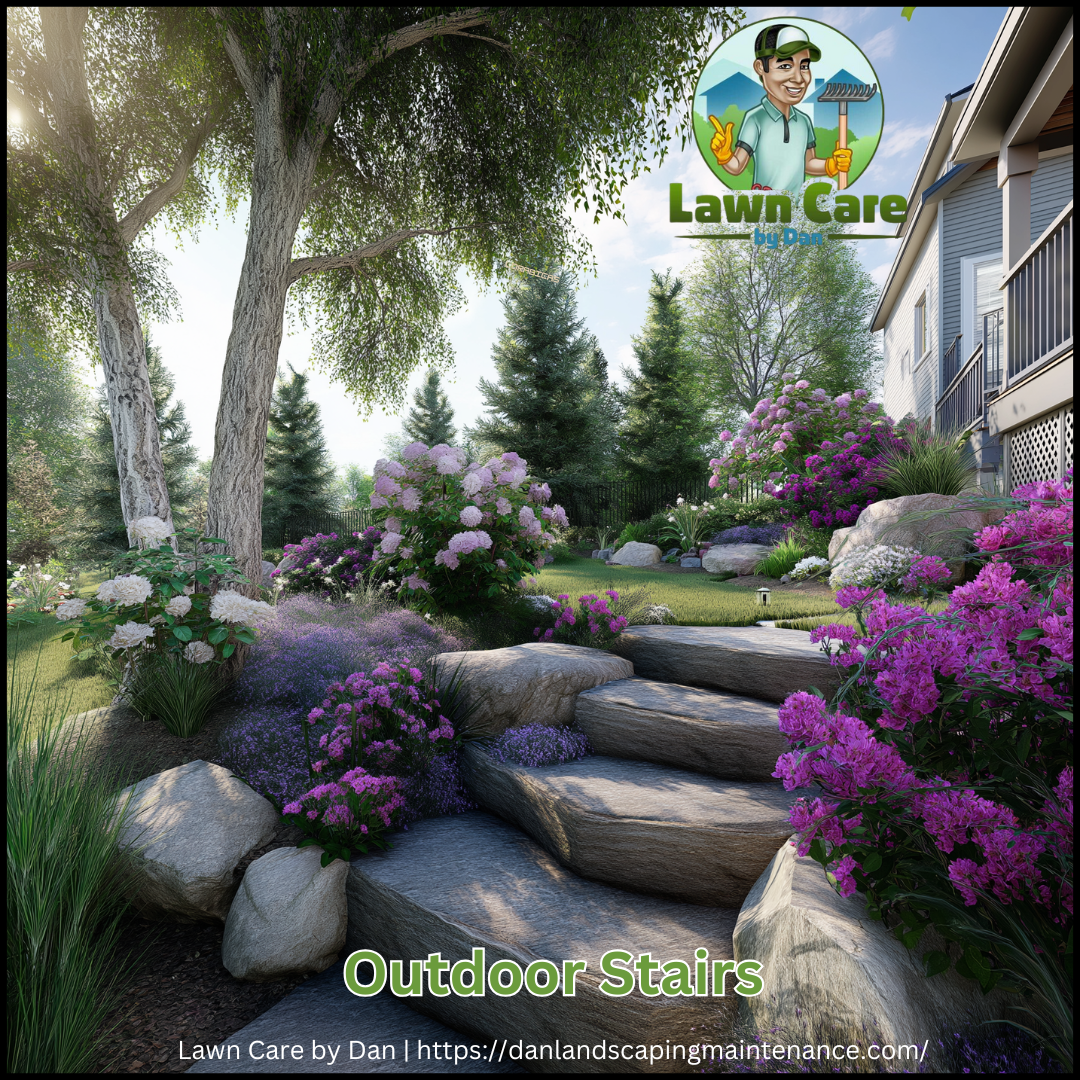
Outdoor stairs do more than connect one part of your yard to another—they’re a blend of form and function. Designed right, they create safe transitions, enhance curb appeal, and even increase your home’s value. Whether a rustic stone path or a sleek set of concrete steps, stairs are a hardscaping essential. With expert installation from Lawn Care by Dan, they have become a long-term asset.
Why Outdoor Stairs Matter
Safety Comes First
Stairs are often the safest option for managing changes in elevation on your property. Properly built with consistent riser height, ample tread depth, and sturdy railings drastically reduce the risk of slips and falls—especially in rainy or icy climates.
Pro Tip: In the Pacific Northwest, non-slip surfaces are key to preventing accidents during the wet season.
Aesthetic Impact
Stairs help shape your landscape, guiding foot traffic while making a visual statement. When crafted with care, they connect patios, gardens, and walkways intentionally and elegantly.
Property Value Boost
Well-designed stairs signal quality and care to potential buyers. They suggest a thoughtful landscape design and contribute to a polished, move-in-ready impression.
Choosing the Right Stair Material
Wooden Stairs
- Pros: Budget-friendly and quick to install, wooden stairs offer a warm, organic appearance that complements natural landscapes. They blend seamlessly with decks and garden settings.
- Cons: Wood is vulnerable to moisture, pests, and UV damage if not properly treated, leading to premature wear and safety concerns.
- Maintenance Tips: Seal every 1–2 years with a weather-resistant stain or sealant to prevent water damage and decay. Regularly inspect for splintering, soft spots, and pest damage, and replace any compromised boards promptly.
Concrete Stairs
- Pros: Exceptionally durable and able to be molded into nearly any shape, concrete stairs work well for both traditional and modern designs. They can be colored or textured for added style.
- Cons: Concrete can crack over time due to freeze-thaw cycles, soil movement, or poor initial installation.
- Maintenance Tips: Clean periodically with a mild detergent or power washer. Apply a sealant every few years to protect against moisture. Address minor cracks quickly with patching compound to prevent structural issues.
Metal Stairs
- Pros: Metal stairs are known for strength and longevity and have a sleek, industrial appeal. They resist most pests and work well in modern or minimalist landscapes.
- Cons: Without protective coatings, metal can rust, especially in damp or coastal areas. Smooth surfaces can also become slippery in rain or snow.
- Maintenance Tips: Use weatherproof or galvanized finishes to prevent rusting. Install grip tape or non-slip treads for safety, and periodically check for rust spots or loose fasteners.
Stone Stairs
- Pros: Stone is one of the most durable and attractive stair materials available. It lends a timeless, high-end look to outdoor spaces and blends well with natural surroundings and custom landscaping.
- The cons: Due to the weight and complexity of installation, the cost of materials and labor can be high. Custom-fitting stones takes time and expertise.
- Maintenance Tips: Keep stairs free from leaves and organic debris to prevent moss and mildew buildup. Periodically check for movement, cracks, or loose stones, especially after storms or freezing weather.
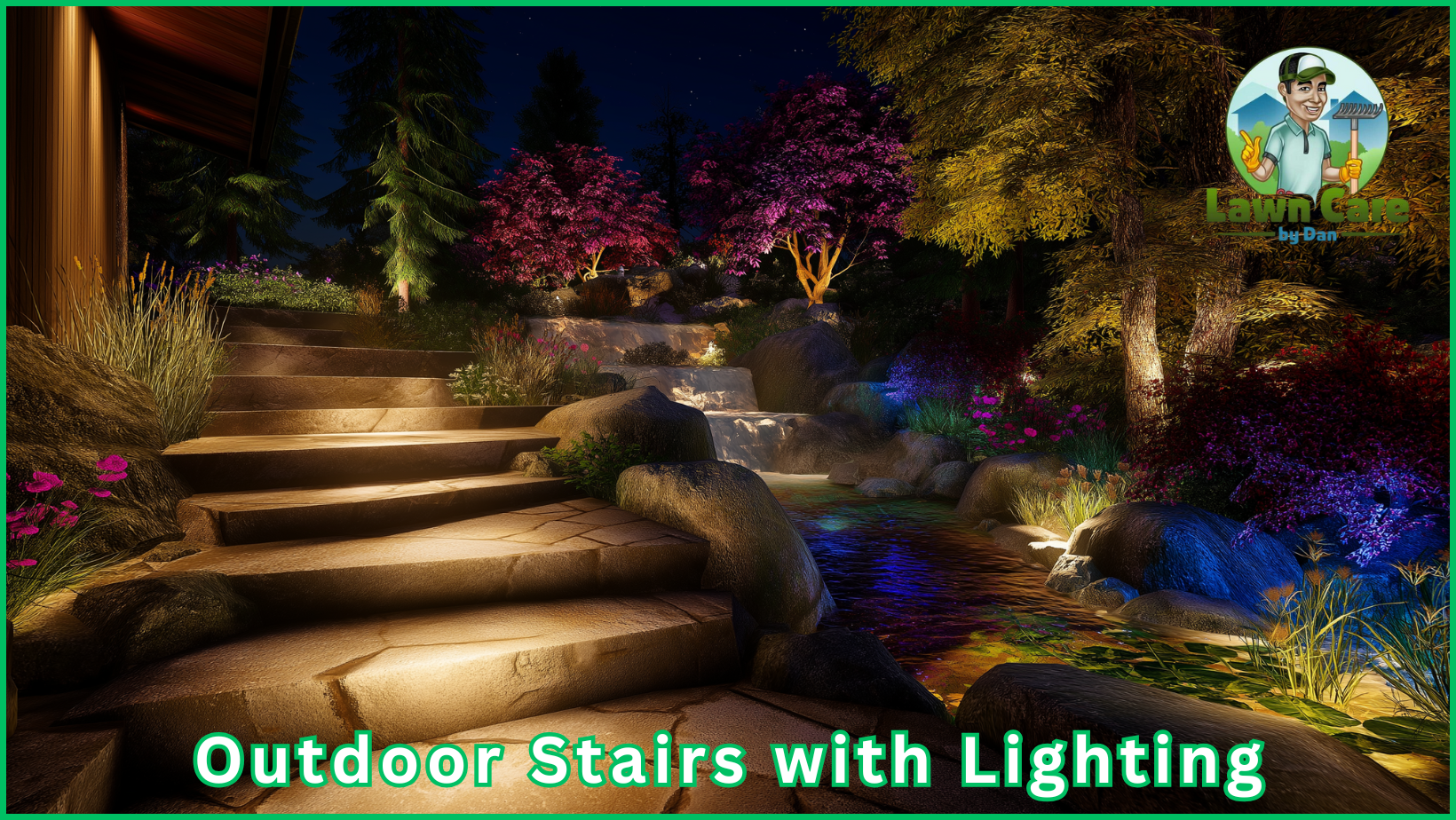
Planning the Perfect Staircase
Key Design Considerations
- Slope and Space: Take a close look at your yard’s grade. A steep slope might require more steps and landings to maintain comfort and safety. Adequate width and spacing also ensure that the stairs don’t feel cramped or too narrow, especially in high-traffic areas.
- Budget: Factor in not just the initial cost of materials and labor, but also ongoing maintenance. While wood might be cheaper upfront, materials like stone or concrete often pay off with lower upkeep and a longer lifespan.
- Climate: Weather plays a huge role in wear and tear. For instance, areas prone to freezing should avoid porous materials that can crack from moisture expansion. Humid climates may demand mold- or mildew-resistant finishes to keep stairs safe and looking good.
Trending Styles
- Under-step LED lighting: This subtle feature enhances both safety and ambiance, illuminating each step without overpowering the design.
- Mixed materials (e.g., wood with metal railings): The contrast of textures adds a custom feel and can help stairs match multiple outdoor elements.
- Gentle curves to soften hard lines: Instead of rigid angles, curved stairs introduce a flowing, organic quality that blends beautifully into landscaped surroundings.
Match Your Home’s Vibe
Stairs that complement your home’s architecture tie everything together visually. For example, traditional homes might call for flagstone or brick stairs that echo historic charm, while modern architecture benefits from clean lines and sleek finishes. When selecting materials and layouts, consider color, texture, and overall design language.
Maintenance for the Long Haul
Regular Cleaning
- Sweep often: Keep the surface free of debris, leaves, and dirt. This prevents stains and reduces slip hazards, especially in shaded or damp areas.
- Use a hose or pressure washer on concrete and stone: Periodic deep cleaning helps remove grime and organic buildup. For more stubborn stains, consider using a mild cleaner or algae remover.
- Remove algae and moss quickly: These can create dangerously slick surfaces. Use a scrub brush and eco-friendly solution to eliminate buildup, particularly in shaded or moist spots.
Quick Fixes
- Tighten or replace loose handrails. Wobbly railings are a serious safety risk. Also, make sure all posts and brackets are secure and rust-free.
- Seal cracks: Patch cracks early in concrete or stone stairs to prevent water infiltration and further expansion during freeze-thaw cycles.
- Touch up protective coatings: Reapply sealant or paint to wooden, metal, or concrete stairs as needed. This prevents moisture damage, UV fading, and rust.
When to Call in the Pros
If your stairs shift, sag, or show signs of structural failure, such as large cracks, uneven settling, or loose treads, it’s time to call a professional. Structural issues often require foundation work, releveling, or material replacement—tasks that require expert assessment and tools to resolve safely and effectively.
Time to Step It Up
Outdoor stairs are a practical upgrade with major style points. They help navigate uneven terrain, make a statement, and add tangible value. Whether you’re tackling it yourself or hiring help, remember this: a solid foundation and smart design go a long way.
Partner with Lawn Care by Dan
When safety and style matter, trust the pros. Lawn Care by Dan designs and installs custom outdoor stairs that last. Ready to transform your yard? Contact us today to get started on your hardscape masterpiece.


